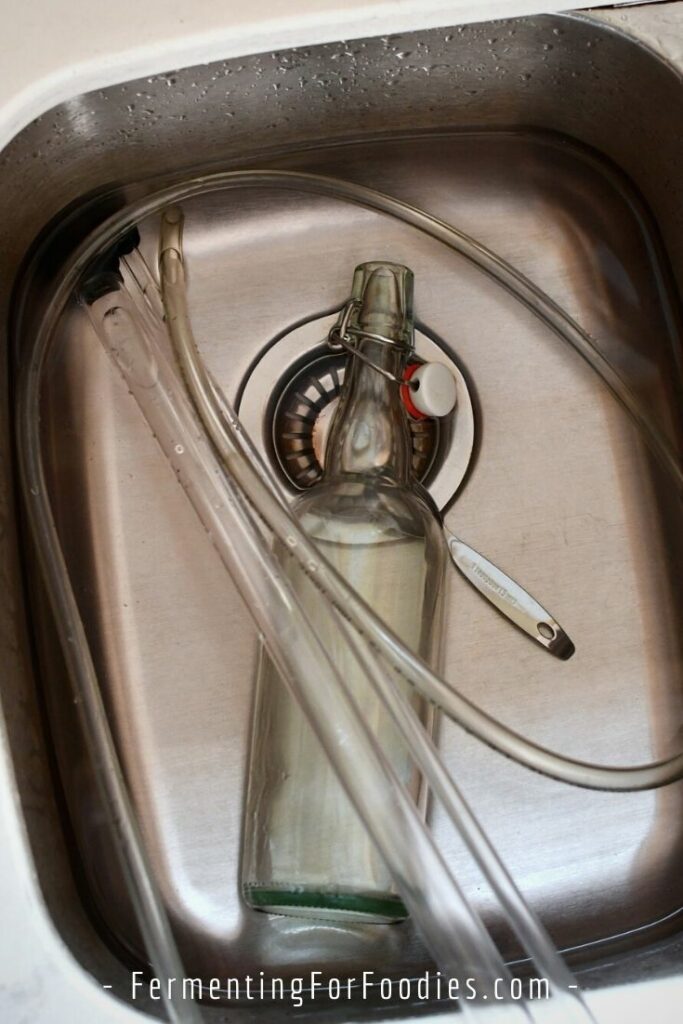Proper cleaning is important for safe and delicious homemade cider and wine. Here is everything you need to know about sanitizer for cider and wine making equipment.

The goal of sanitation is to kill off the free-range yeasts, fungus, and bacteria that might be in your kitchen or on your equipment.
Sanitizing is particularly important for pectin-containing fruits because certain strains of bacteria will break down pectin into methanol. Though it’s VERY unlikely that homemade wine would reach toxic levels of methanol, it is still better to avoid it altogether. So always sanitize your wine making equipment!
BASIC GUIDELINES:
- Pull your hair back.
- Wash your hands and sing the chorus of “Red, Red Wine” under the running water before touching any of the equipment.
- Wipe down your counters with a sanitation solution.
- Sanitize all of your equipment.
- Never, EVER towel dry your equipment. Let it air dry on a clean towel instead.
Wine Making Sanitizer Options
A commercial sanitizer is really the best way to sanitize your bottles and equipment. While you can use bleach or boiling water, commercial sanitizer is easier and more reliable.
You can usually find a few options at a wine making shop. Just follow the instructions on the package for mixing and rinsing. I usually mix a batch of sanitizer in my kitchen sink whenever I’m making cider or wine. Then I can easily sanitize, wipe down my counters, etc. whenever I need to.
Here is a list of common sanitizers:
- Pink chlorine sanitizer powder: Equipment cleaned in chlorine-based sanitizers need to be rinsed well prior to use. Chlorine doesn’t taste good, and it will kill the wine yeast. Officially, it’s risky to use tap water for rinsing… but I have never had an issue with contamination from my city’s tap water. If you use well water you probably want to buy bottled water for rinsing.
- Star San: This is a food-grade phosphoric acid that is odorless and flavorless. When diluted for sanitizing, it doesn’t need to be rinsed off. However, you should wear gloves because the acid (pH of 3 or lower) is harsh on your skin. Also, don’t leave your metal and plastic implements soaking in Star San, because they will be harmed by long exposure to the acid.
- Potassium Bisulfite: Potassium bisulfite can actually be used at several stages throughout the wine-making process. It can be used to pretreat the fruit and prevent contamination from molds and bacteria on the fruit. It can be added during bottling as a preservative. (I have never personally done this as I’m sensitive to sulfites). Most importantly, it can be used as a no-rinse sanitizer. The only trick is that potassium bisulfite expires after one year on the shelf. So don’t buy it in bulk.



This is the best site for wine making I have found!! I am a newbie and want to be sure to be safe! Thanks!
Thanks!